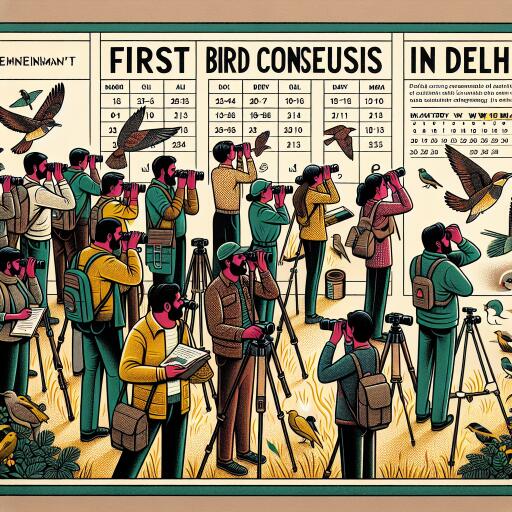
Initiative to Map Delhi’s Avian Wealth: The Inaugural Bird Census Embarks
In a pioneering effort to chart the diverse avian populace of India’s capital, the Delhi Forest and Wildlife Department has embarked on an ambitious journey to develop the city’s first-ever “bird atlas.” The atlas aims to encapsulate the rich tapestry of bird species populating Delhi and their respective habitats, offering insights into the shifts in avian diversity and habitat significance over time.
The genesis of this project will see a comprehensive bird census unfold at the tail end of February, marking the beginning of a series of surveys that will be carried out quadrimesterly. This periodic endeavor is designed to shed light on the vibrant spectrum of both resident and migrigratory birds that grace the city across the changing seasons.
This initiative represents a maiden venture for the department in conducting a dedicated census aimed explicitly at birds within the urban expanse of Delhi, setting the stage for the subsequent creation of an invaluable bird atlas.
The execution of this expansive survey will see a collaborative effort alongside the Delhi Development Authority’s Biodiversity Parks Programme and a passionate group of student volunteers from Delhi University. With the engagement of experienced bird watchers, the team aims to canvass an array of ecologically rich zones across the metropolis, ensuring a comprehensive coverage of its avian inhabitants.
This project draws inspiration from similar successful endeavors in states like Kerala and Goa, championing the importance and necessity of a localized bird atlas for Delhi. “The cyclical nature of the census every three months will enable a nuanced understanding of the seasonal variations in bird populations, providing a solid foundation for the atlas,” explained a key official from the wildlife department. The initiative is poised to generate an annual publication, meticulously detailing the findings and insights gleaned throughout the year.
The current plans include an extensive survey across more than ten designated locations, with scope for expansion based on volunteer participation. These sites encompass a variety of ecological niches, from the Asola Bhatti Wildlife Sanctuary to the extensive stretches of the Yamuna floodplains, aiming to capture the complete essence of Delhi’s avian biodiversity.
Delhi has historically been a hotspot for birdwatchers, evident from the informal counts and data collection exercises orchestrated by the birding community. However, the formalization of this effort into a structured atlas marks a significant leap forward in documenting and understanding the city’s bird life. For instance, the Big Bird Count 2024 recently spotlighted the rich diversity with an impressive sighting of 237 species across Delhi and the National Capital Region (NCR).
Experts involved in the atlas project emphasize the necessity of a rigorous data collection methodology, extending beyond the planned quarterly censuses. The goal is to achieve a detailed, multi-seasonal dataset that faithfully represents the fluctuations and trends in bird populations over the years. Leveraging existing platforms like the eBird portal as a foundational data source has been suggested to enrich the atlas with historical and contemporary insights into Delhi’s avian diversity.
As the city anticipates the launch of its first bird census, the excitement among the birding community and conservationists is palpable. With the prospect of Delhi’s bird atlas taking shape, the initiative promises to be a landmark step in conservation efforts, guiding policies and actions towards preserving the remarkable bird biodiversity of India’s capital.





Leave a Reply